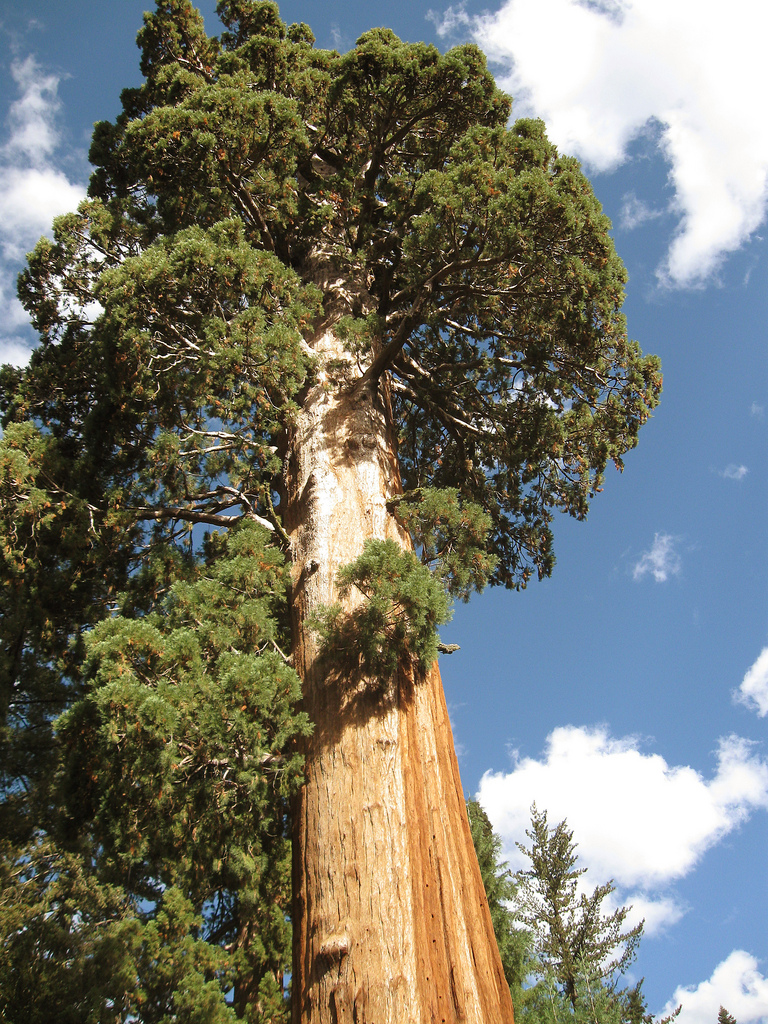Well, on the western slopes of the Sierra Nevada, it is possible to walk amongst mighty sequoia trees that reach heights rivaling the downtown offices of any city.
Widely accepted as the world’s largest tree (by volume), the giant sequoia is one of the three redwood species still living today.
Although the record trees have measured over 300 feet tall and up to 56 feet in diameter, the average sequoia is between 250 to 280 feet tall and 10 to 15 feet around. To reach those dizzying heights and impressive girths, sequoias not only grow extremely quickly, but they also are very long-lived.
Today, sequoias are only found in a limited 260-mile stretch in California , where they grow in mixed stands with ponderosa pine, white fir, sugar pine and incense-cedar. The trees thrive in a particular climate between an elevation of 4,500 and 7,500 feet, where summers are dry and winters snowy.
The Sierra’s snowpack and subsequent snowmelt are an important source of the thousands of gallons of water sequoias need each day. In order to maximize their water intake, the trees have shallow, wide-reaching roots systems that can reach as far as 250 feet from the trunk and can easily be damaged by human foot traffic.
In addition to water, fire plays a pivotal role in the giant sequoia life cycle.Sequoias do not begin to produce cones until they’re about 200 years old and it may take as long as 20 years for those cones to open up and release their seeds. In order for the seed dispersal to occur, the cones need to dry out sufficiently, a process that is greatly aided by natural wildfires burning through the area. Natural fire cycles also periodically clear out understory growth, allowing sequoia seedlings to thrive. For added protection against the hottest of blazes, sequoia bark is 1- to 2-feet thick and contains tannic acid, a compound that is so fire resistant it has even been added to fire extinguishers.

We’re working with various agencies and non-profits in California to discuss ways each organization can improve the management of sequoias, particularly in respect to climate change.
Giant sequoias truly are one of the world’s great natural wonders. Not only are they some of the biggest organisms on the planet, but they are also some of the oldest. It’s hard to believe that not far from San Francisco or Los Angeles you can stand beneath a tree as tall as a skyscraper that grew from a tiny seed years before the Roman Empire. The giant sequoias that remain today truly are worthy of our respect and awe: as John Muir said, “Do behold the King sequoia! Behold! Behold!”

